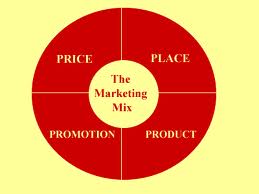Search results for: Marketing Communication Mix

Recommendations are offered by a range of authors in terms of effective engagement in viral marketing. It has been stressed that “one of the major factors regarding viral adoption is that the consumers must be engaged in the message” (Beneke, 2010, p.195) According to Zarella (2010), utilisation of free products or services within viral marketing programs can enhance the efficiency of a marketing campaign through sparking additional interests from users. Specifically, Zarella (2010) recommends distributing for free inexpensive items such as mugs or t-shirts as an integral part of a viral marketing campaign. The quality of viral marketing content is specified as one of the decisive factors by Mueller (2010). This viewpoint is also shared by Beneke (2010), who argues that the content of a viral marketing campaign has to have an emotional appeal so that the campaign can be highly successful. Additional viewpoint proposed by Scott (2011) relates to exclusivity of viral marketing campaigns. Scott (2011) explains exclusivity in viral marketing as an invitation to join certain clubs, enjoying access to specific products or services prior to their official release dates etc. Addressing the same issue, Kirby (2012) warns that if such offers are introduced in great numbers the level of exclusivity may be compromised, at the same time compromising the effectiveness of the overall campaign. Letelier et al. (2002) propose a range of alternative viral strategies to be implemented by businesses depending on company’s chosen business strategy. Specifically, alternative strategies proposed by Letelier et al. (2002) include fostering allegiance, building excitement, increasing emulation, and creating dissemination. The following table illustrates details associated with each of these strategies: Brand as Authority Promoter as Authority We-Focus Foster Allegiance Strategy Organise: Grassroots,shared meetingsCommunication approach: Solicit authentic voices, publish members’ experience with community Reward for members: Public recognition with…

Executive summary This is an innovative marketing plan devised for a new business that involves selling herbal teas online. The business involves importing three ranges of herbal tea – Rugose Rose flower tea, Carnatation flower tea, and Jasmine Bud flower tea would be from China to UK and selling over the website healthy-herbal.co.uk. The main competitive advantages associated with the business proposal include innovative marketing plan, competitive prices and high quality of products. A comprehensive situation analysis conducted on the basis of formulating key assumptions and conducting SWOT analysis has preceded the choice of marketing tools and techniques in order to well healthy-herbal.co.uk herbal teas. Marketing strategy formulated for healthy-herbal.co.uk consist of specific marketing techniques belonging to advertising, sales promotion, and direct marketing communication mix components. Moreover, the innovative marketing plan relies on viral marketing techniques due to their high level of cost effectiveness and speed. Namely, viral marketing techniques to be used by healthy-herbal.co.uk include e-mail marketing, Facebook marketing and marketing through YouTube. The marketing plan focuses on integration of all individual programs and initiatives in order to communicate the brand value proposal of healthy-herbal.co.uk which is associated with adopting a proactive approach in leading healthy lifestyle. The plan also contains provisions for the measurement of results. 1. Introduction This is an innovative marketing plan for a new online business that would be selling a range of herbal teas – Rugose Rose flower tea, Carnatation flower tea, and Jasmine Bud flower tea over a website, healthy-herbal.co.uk. Focusing on integrated marketing communications, the marketing plan addresses each component of marketing communication mix an individual manner. The range of herbal teas offered by healthy-herbal.co.uk – Rugose Rose flower tea, Carnatation flower tea, and Jasmine Bud flower tea and others have significant health benefits and they are also very delicious, and…

Marketing plan for John Lewis is developed on the basis of SOSTAC framework developed by Smith (2003), and the acronym is interpreted in the following manner: S Situation analysis – where are we now? O Objectives – where do we want to go? S Strategy – how are we going to get there? T Tactics – which are the details of strategy? A Action – implementation i.e. putting the plan to work C Control – measurement, monitoring, reviewing, updating and modifying Figure 1 Interpretation of SOSTAC framework Source: Smith (2003) The manner in which SOSTAC framework is going to be implemented by John Lewis is explained in great detail in following sections. Situational Analysis A range of key issues emerge from John Lewis SWOT analysis conducted in previous article. Specifically, international market expansion has been found to be an attractive business opportunity not currently utilised by the company. Engaging in international market expansion would be an effective response to the issue of market saturation in UK. Moreover, it has been found that forming strategic partnerships in global marketplace with multinational businesses can have an immense positive impact on John Lewis long-term growth. Global Marketing Objectives for John Lewis The following global marketing objectives for John Lewis are formulated according to SMART principle, the abbreviation standing for specific, measurable, achievable, realistic and time-bound: To obtain minimum 15% of department store market in Beijing and Shanghai by the end of 2015 To achieve an annual growth rate of minimum 18% for international markets To ensure that revenues from international markets account for at least 45% of total revenues for John Lewis by 2018 To be forming strategic partnerships with at least one major local company in each new market John Lewis enters in To achieve John Lewis to become…

Initially it had been presumed that consumers simply wanted their products and services with no questions asked but as the case may be people began to peer behind the brand facades and discovered all sorts of things they didn’t like from environmental irresponsibility to exploitation of child labour consequently social and moral concerns began to firmly exist in traditional marketing terms (Mitchell 2007). As a result of this progression major developments in the form of corporate social responsibility (CSR) began to occur. CSR is defined as ‘recognising that companies have a responsibility to a range of stakeholder groups such customers, employees and suppliers (Adkins 2005). Consumer reactions to CSR are not as straightforward as preferred with numerous factors affecting whether a firm’s activities translate into consumer purchases. Although people say that CSR matters in their purchase decisions, the reality is that customer responses to initiatives are not always consistent (Sen and Bhattacharya 2001). However over the past decade, CSR has gradually been integrated into the business activities of companies all over the world where businesses integrate social and environmental concerns into their corporate operations (Demetriou et al 2010). CSR allows businesses the opportunity to strengthen their corporate reputation and profitability by signalling to the various stakeholders with whom the organization interacts that it is committed to meeting its moral obligations. As a result, ‘many businesses have become more closely interrelated with society by focusing on charitable donations, corporate philanthropy, community participation, and Cause-related marketing’ (CAUSE-RELATED MARKETING ) (Demetriou et al 2010). CAUSE-RELATED MARKETING as it is purposefully referred to involves partnering charitable causes with products for marketing programs (Chang 2009) and applying strategies to support these causes whilst building the business (Adkins 2005). Cause related marketing recognises the importance of an alliance between businesses and charitable organisations for the same…

The paradigm of marketing mix can be defined as “a unique blend of product, place, promotion, and pricing strategies designed to produce mutually satisfying exchanges with a target market” (Lamb et al, 2011, p.47). The product element of the marketing mix relates to decisions about product design, name of the brand, packaging, warranties etc. The pricing element, on the other hand, relates to decision-making about the pricing strategy and the calculation of total costs of products and services to customers. Promotion includes, advertising, personal selling, sales promotion, public relations, and any other activities that are aimed to advertise brand and its products and services. Place element of the marketing mix mainly involves the location where products and services are sold. Nargundkar (2008) convincingly argues that the main benefit of marketing mix paradigm relates to its assistance in selecting competitive edge for the business. In other words, marketing mix paradigm communicates the idea that it is not possible for businesses to have competitive edge for all four aspects of the business – product, place, promotion, and price, and adopting one element of marketing mix as a source of competitive edge would mean compromising other elements. For instance, UK clothing retailer Primark has adopted price element as the source of competitive edge for the business, and thus the brand has to compromise on some of the other elements of the marketing mix. Specifically, if Primark management decide to increase the quality of products and promotion this would result in the prices of its products to be increased, thus its current competitive advantage of low prices would be compromised. There have been many additional Ps added by business researchers over the course of the last several decades, however as Baker and Hart (2007) inform, the most acknowledged additional Ps apart from the original…

Marketing mix is one of the most popular theoretical frameworks in marketing that has been used by companies in order to make marketing and other decisions in a more efficient manner. Companies have concentrated on various elements of marketing mix as a source of competitive edge according to the strategy adopted by senior level management in order to achieve long-term aims and objectives. The potential contribution of marketing in terms of obtaining competitive edge has been realised by management of many successful businesses therefore, the attention to this specific area of business practice has become greater than ever before (Egan, 2007). Accordingly, today most of the concepts associated with marketing such as marketing mix, product life-cycle, PEST and SWOT analysis, Porter’s Five forces, Value-Chain analysis and others attract more interest than ever before and these marketing concepts are finding their practical applications among increasing number of businesses. Marketing mix, otherwise known as 4Ps can be highlighted as one of the fundamental concepts in marketing and focuses on four aspects of the business practice: product, price, promotion and place (Klein, 2007). The practical application of marketing mix by companies varies according to their size, chosen business strategies, geographical location, competitive edge and a range of other factors. According to Kumar (2010), marketing mix is the terms used to describe the combination of methods employed by a business in order o achieve its objectives by marketing its products and services effectively to a specific target group. Bootwala et al (2009) mention the definition of marketing mix as offered by Philip Kotler according to which “marketing mix is a set of controllable variables and their levels that the firm uses to influence the target market” (Bootwala et al, 2009, p.3.1). Evolution of Marketing Mix Kitchen (2010) informs that the theory of marketing…

Contribution of the class to analytical and behavioural skills I have gained huge benefits from learning the module of International Marketing both at personal and professional levels. Professional benefits include the knowledge I have gained regarding the subject and all the related principles, and theories like the impact of globalisation in international marketing, the importance of segmentation, the current global marketing issues, the global marketing environment and its influence to companies, global market entry strategies, components of a global marketing plan etc. Personal benefits I have obtained as results of the module include skills I have gained like increasing the level of my cross-cultural awareness, the ability to critically analyse global issues, improving my communication skills etc. I was familiar with the subject of marketing even before the module through marketing management module I have attended before. However, International Marketing module has equipped me with knowledge and way of thinking that allowed me to approach the issues of marketing I was already familiar with from a global perspective. For example, the analysis of external business environment in marketing management which is done using PESTEL strategic tool, external factors affecting the business were looked at in a specific country level. In international marketing, on the other hand, each individual factor of PESTEL analysis is looked at in the global level, allowing me to see the bigger picture. This is very important taking into account the fact that the forces of globalisation are ever-increasing, the importance of trade border between the various countries are decreasing, and as a result today companies may expect competition for their businesses from any parts of the world. I found the decisions regarding the components of marketing mix to be more challenging in international marketing than these decisions to be taken within company’s home country alone, because increasingly…
By John Dudovskiy
Category: Personal reflection & development

Learning gained and contribution to analytical and behavioural skills I found this module informative and motivating and I believe that my knowledge and skills have increased after I attended it and done my assignment. My knowledge of marketing has been significantly expanded as a result of attending classes, to include global approach to the marketing issues. In fact, I found out that the practice of marketing for businesses has become much more complicated due to the influence of globalisation to it. I updated my knowledge in such areas of international marketing as the impact of global factors to company management decision-making, strategies of choosing and entering new markets, developing new products for international markets, the characteristics of marketing research for international markets, international marketing mix elements etc. Our group was able to find during international marketing classes that the rules of games have changed in the business world in many aspects because of opportunities and threats globalisation presents. I understood that global marketplace has become much more competitive due to the increasing forces of globalisation, technological advancements, and the increasing role of Internet in professional and private lives of people. And all of this have affected the ways decisions are taken in companies, including decisions taken by marketing executives. I started to appreciate the importance of developing global mindset for modern marketing executives as a result of becoming closely familiar with the differences of marketing in it’s traditional meaning, and international marketing. The main differences turned out to be the increasing number of factors modern markers need to take into account the speed of decision-making and requirement for modern marketing executives to be more creative. The importance of creativeness and “thinking out of box” was especially highlighted during the classes as one of the necessary attributes of modern marketers. The valuable…
By John Dudovskiy
Category: Personal reflection & development

Product placement is a marketing strategy that has accidentally evolved a few decades ago. Nevertheless, the efficiency of the product placement has been spotted by professionals and since then various companies engage in product placement activities in various levels with varying efficiency. One of the main differences of product placement from other marketing strategies is the significance of factors contributing to it, such as context and environment within which the product is displayed or used. Implementing an efficient marketing strategy is one of the essential conditions for a product to be successful in the marketplace. Companies may choose different marketing strategies including advertising, channel marketing, internet marketing, promotion, public relations, product placement and others. Each of one of these marketing tools has its advantages and disadvantages and the rationale behind the choice among these tools relates to the type of the product, type of the market and the marketing strategy of the company. Product placement among them is one of the marketing strategies which have evolved recently. In product placement a product is placed in a movie or television show in exchange for payment of money or other promotional consideration by the marketer (Gupta & Gould, 1997). According to Cowley& Barron (2008, p.91), as taken from Parrish, auto industry has been among the very first industries to use product placement as a marketing strategy. One of the automobile companies which use product placement strategy heavily to promote its cars is Aston Martin – a British manufacturer of luxury cars. There have been many researches on the subject of product placement undertaken by different authors at different points of time. The use of product placement as an effective marketing strategy has intensified mainly during the last three decades. According to DeLorme& Reid(1999), until recently studies on product placement have been generally…

Integrated Marketing Communications is described as “a concept of marketing communications planning that recognizes the added value of a comprehensive plan that evaluates the strategic roles of a variety of communication disciplines and combines these disciplines to provide clarity, consistency and maximum communications impact” (Belch and Belch, p.22 ). Integrated Marketing Communication in explained by Lee (1996, p.34) as ‘a new way of looking at the whole, where once we saw only parts such as advertising, public relations, sales promotion, purchasing, employee communication, and so forth, to look at it the way the consumer sees it – as a flow of information from indistinguishable sources’ Iacobucci and Calder (2003, p. ) specify the difference of integrated marketing from the traditional marketing by the fact that the main focus of the integrated marketing is on on-to-one marketing, relationship marketing or database marketing. This idea is supported by Schultz et al (1993, p.) who claim the main attention of integrated marketing to be on communication. The benefits of the Integrated Marketing Communications is listed in MMC Learning (online, 2010) as the following: • Integrated Marketing Communications initiates and maintains communication with customers. This leads to the increased level of customer satisfaction and the consolidation of image for the company; • The level of customer loyalty can be increased significantly through the use of Integrated Marketing Communications due to the strong bond between customers and the company it creates. • Increased level of profitability can be resulted by the use of the Integrated Marketing Communications due to the fact that the latter increases the overall efficiency of the company. • Messages sent to the customer through Integrated Marketing Communications are usually more consistent and this increases its credibility • Duplication of marketing and other efforts are eliminated in Integrated marketing Communications, therefore company…
